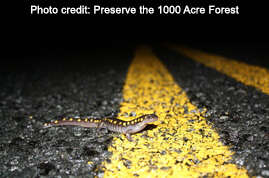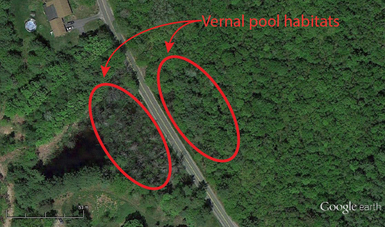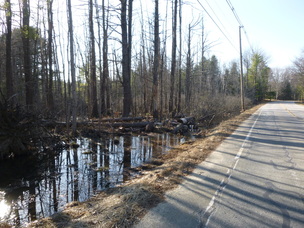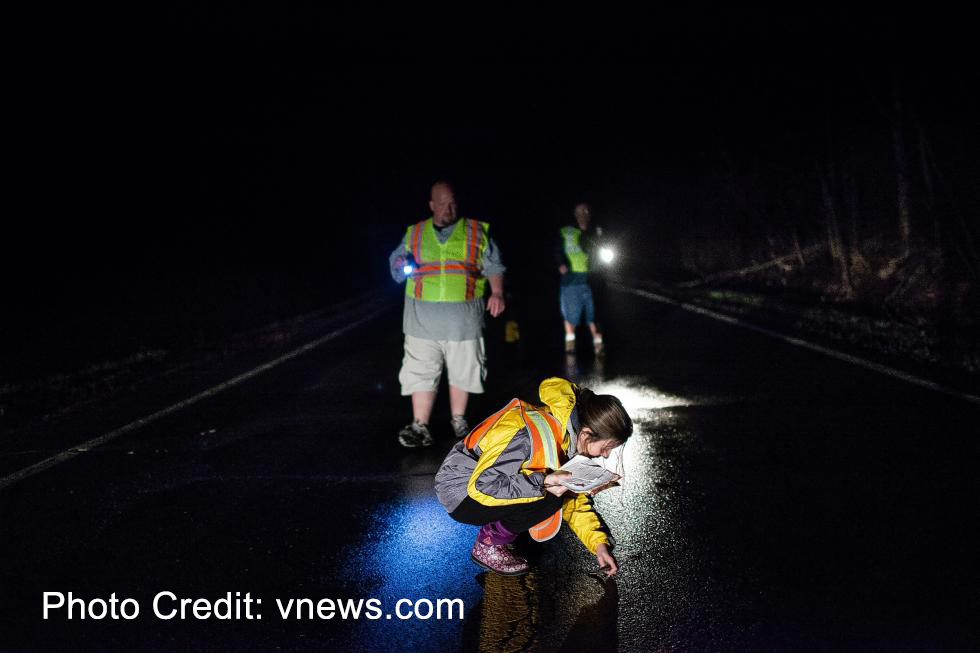Jared Homola, PHD Student, University of Maine
One of the greatest challenges of conserving vernal pool ecosystems is finding ways for these fragile habits to exist alongside the roads, buildings, and other man-made structures that are important to our society. Although there are several ways that the built environment can influence the health of vernal pools, one of the most direct means is by decreasing the ability of amphibians to move across the landscape.
Instances of roads and buildings influencing vernal pools are evident in many areas. For example, one of the southern Maine vernal pools that the Of Pools and People researchers visited during April 2014 is entirely separated into two different sections by a road.
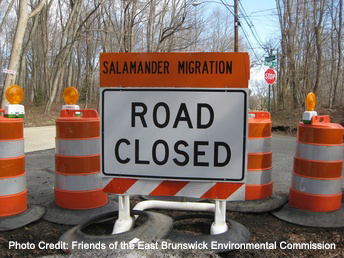 One consequence of reducing the ability of amphibians to move is that it can be difficult for individuals to migrate among the different habitat types they require. Amphibians that depend on vernal pools for reproduction typically spend the rest of the year in upland habitats away from the pools, making migrations an essential part of their life cycle. When migration paths cross roadways, many amphibians experience high mortality likelihoods due to roadkill.
One consequence of reducing the ability of amphibians to move is that it can be difficult for individuals to migrate among the different habitat types they require. Amphibians that depend on vernal pools for reproduction typically spend the rest of the year in upland habitats away from the pools, making migrations an essential part of their life cycle. When migration paths cross roadways, many amphibians experience high mortality likelihoods due to roadkill.
Overtime, these roadkills can decrease population sizes, making localized extinctions more likely. This is particularly true when additional factors such as drought and disease are considered. For instance, an amphibian population already in decline due to excessive road-related mortality is much less likely to be able to weather additional pressures. Furthermore, when amphibians have the ability to move among populations, an influx of individuals from a different location could save a population from extinction. Therefore, it is critical for resource managers to ensure amphibians have the ability to move both between vernal pools and between the habitat types they require throughout the year.
Fortunately, efforts are being made to ensure animals can safely move among habitats. For instance, amphibian migrations are being assisted by temporary road closures and the use of culverts under roads to facilitate safe migrations. In other locations, groups of volunteers gather on rainy spring nights to observe these amazing migrations, as well as ensure road crossing occur without incident.

